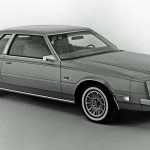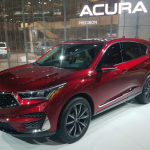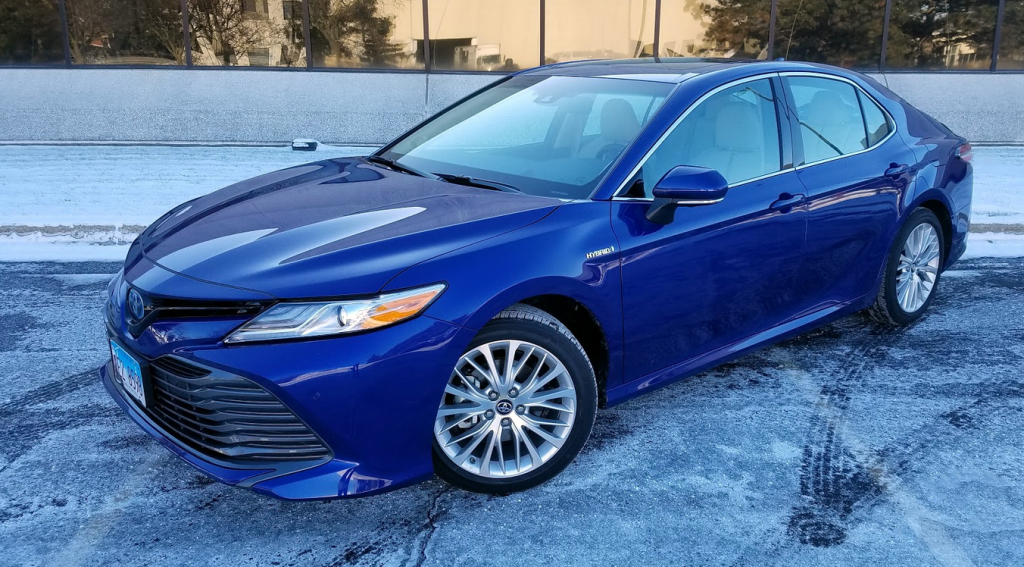
 2018 Toyota Camry Hybrid XLE
2018 Toyota Camry Hybrid XLE
Class: Midsize Car
Miles driven: 266
Fuel used: 6.5 gallons
Real-world fuel economy: 40.9 mpg
Driving mix: 60% city, 40% highway
EPA-estimated fuel economy: 44/47/46 (city, highway, combined)
| CG Report Card | |
|---|---|
| Room and Comfort | B+ |
| Power and Performance | B |
| Fit and Finish | A- |
| Fuel Economy | A |
| Value | B+ |
| Report-card grades are derived from a consensus of test-driver evaluations. All grades are versus other vehicles in the same class. Value grade is for specific trim level evaluated, and may not reflect Consumer Guide's impressions of the entire model lineup. | |
| Big & Tall Comfort | |
| Big Guy | A- |
| Tall Guy | A- |
| Big & Tall comfort ratings are for front seats only. "Big" rating based on male tester weighing approximately 350 pounds, "Tall" rating based on 6'6"-tall male tester. | |
Base price: $32,250 (not including $895 destination charge)
Options on test vehicle: Driver Assist Package ($1050), sunroof ($845), Audio Package ($1800), Illuminated Door Sill Enhancements ($299)
Price as tested: $37,138
Quick Hits
The great: Comfortable cabin, nicely integrated hybrid powertrain
The good: Nice balance between ride and handling
The not so good: So-so acceleration, slightly disappointing cold-weather fuel economy compared to EPA estimates
More Camry price and availability information
John Biel
If you’re still in the market for a midsize sedan (”That’s so 2014,” sneers the part of your automotive brain that longs for a crossover SUV), you may be interested in the 2018 Toyota Camry’s added space, horsepower, and features, plus its more daring styling. If you’re in the market for a midsize sedan that first and foremost saves gas, then the Camry you’ll be interested in is the Hybrid.
The extensive eighth-generation Camry lineup includes gas/electric hybrids in ascending LE, SE, and XLE trim levels, at base prices (with delivery) that stretch from $28,685 to $33,135. Consumer Guide® tested an XLE with a handful of options that pushed its final price to $37,139.

Camry Hybrids are not all alike, and there’s more to that than just aggregations of standard equipment. The LE uses a lithium-ion battery pack, while the SE and XLE rely on a heavier but less-costly nickel-metal-hydride battery. With its smaller tires and weight savings, the LE has an EPA fuel-economy rating of 51 mpg in the city, 53 on the highway, and 52 combined. The SE and XLE are rated at 44, 47, and 46 mpg, respectively. Having put 175.3 wintry miles behind him in CG’s test car, this driver averaged 42.2 mpg with 75 percent city-style operation.
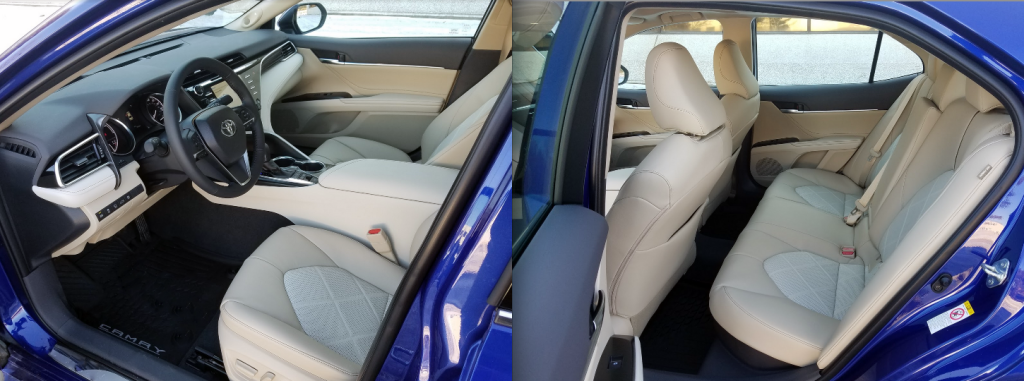
Any Camry Hybrid pairs a 2.5-liter 4-cylinder gas engine with an electric motor for a combined 208 horsepower (up from 200), and comes standard with a continuously variable automatic transmission (CVT). Standing-start acceleration in the “Eco” mode is fairly tepid, but is somewhat livelier in either “Normal” or “Sport” modes. Transitions from electric-motor to gas-engine power are pleasingly unobtrusive, and an “EV” mode permits running solely under electric power for a short period of time. The Hybrid will maintain highway pace without much ado, but getting to that point requires some patience because the CVT doesn’t deliver the accelerative boost of a stepped-gear trans working through the ranges. (Steering-wheel-mounted shift paddles on the SE and XLE allow drivers to manually select six “gears.”)
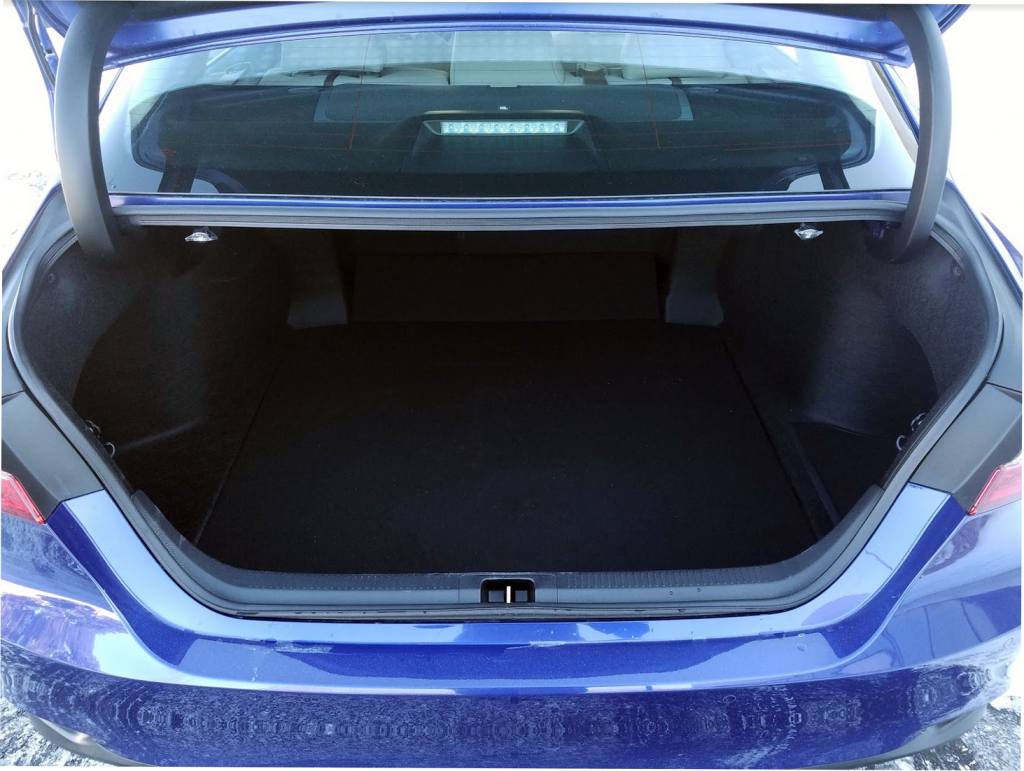
Toyota advertising for the newest Camry has tried to portray the car as something of a goer—a quality never before associated with the nameplate. The ’18 is more engaging to drive, but the hair being blown back on wide-eyed drivers in the television spots is hyperbole. There’s less flab in the ride and handling, and braking is good—even in the hybrid, with its regenerative braking, a feature of electrified cars that usually tends to make them feel a little squeamish about stopping when the pedal is first applied.
The 2018 Camry switches to a version of the Toyota New Global Architecture platform also used in the Prius. This comes with adoption of a new multilink rear suspension. Plus, in the Hybrid, the battery pack has been moved from the trunk to below the rear seat, eliminating the slight cargo-capacity penalty that Hybrids paid for their powertrain, and making it easier to take advantage of the folding rear seats for extra cargo needs. Trunk space is good and well shaped, but the seatbacks rest about seven inches above the trunk floor when folded, making it difficult to slide long items forward. Overall length of the Camry grows by an inch, and wheelbase gains two inches.
The Hybrid XLE’s fuel mileage certainly is the most penny-pinching thing about the car. It’s well stocked with soft-touch materials on the doors and dash, plus a leather-wrapped steering wheel and leather upholstery, and Tiger Eye wood trim. It rolls on 18-inch alloy wheels, and sports automatic LED headlights and a chrome exhaust finisher. Other standard items include a Toyota Entune infotainment system with navigation, app suite, Bluetooth connectivity, and a 7-inch touchscreen; color head-up driving display; 7-inch thin-film transistor vehicle information display; keyless entry and starting; dual-zone automatic climate control; rearview camera; blind-spot monitor and rear cross-traffic alert; and the Safety Sense-P package of forward collision warning and mitigation with pedestrian detection, lane-departure warning and mitigation, automatic high beams, and adaptive cruise control.
Test Drive: 2018 Honda Accord Touring 2.0T
Large, colorful driving controls face the driver. The touchscreen and controls for audio and climate rely on a combination of dials (for station tuning and temperature setting), plus small, shallow toggle switches for other functions. The dials are handier than the switches. Still, audio presets are easy to make and access. Storage consists of a wide but low glove box, and moderately sized console box, pockets on the backs of the front seats, door pockets (small in back) with bottle holders, and open cup holders in the console and pull-down center armrest. There’s good head- and legroom in both rows of seating, and under the right conditions a third adult could fit in the middle of the rear seat. Seats are comfortable and supportive, and if driver vision suffers anywhere, it is due to a somewhat wide rear roof pillar.

Even with its historically bland personality, the Camry never lacked for customers. If that pace is slowing now, it’s only because the entire midsize segment—in which this Toyota is a 2018 CG “Best Buy”—is hurting as consumer tastes change. Reliability and affordability have always been the Camry’s support system. Making it a little more fun to be around can’t hurt it at all.
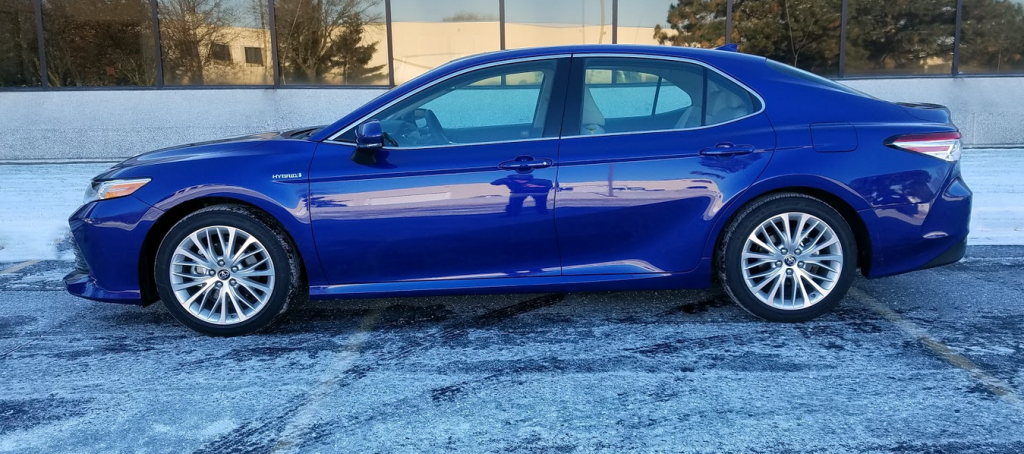
Quick Spin: 2017.5 Mazda 6 i Grand Touring


